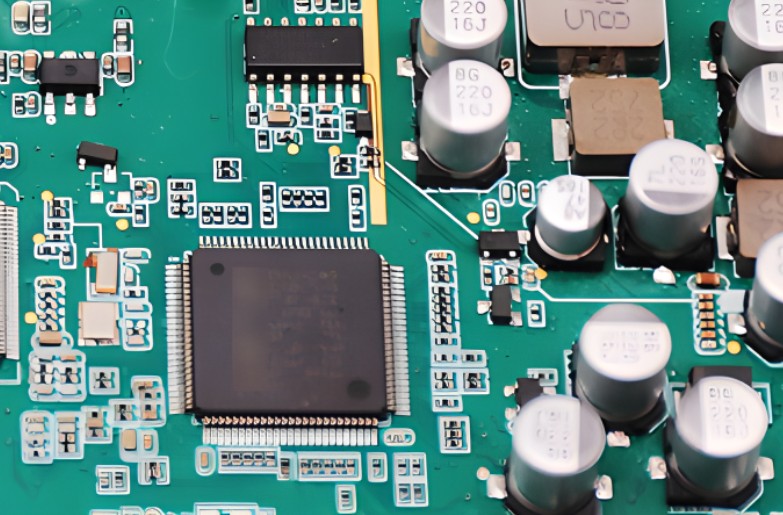PCB is an abbreviation for printed circuit boards, and it is sometimes common to see the expression PWB, which is an abbreviation for printed wire boards. The A in PCBA means “Assembly”. That is to say, PCBA is the abbreviation of printed circuit board assembly. Speaking of assembly, what does PCB assembly mean? We all know that the realization of the PCB electrical function of electronic products support and foundation, needs to be installed on various components to make the PCBA (or product) to be connected and each other to work together. PCB assembly is the process of PCB bare board through the processes of SMT and DIP steps.
So what does SMT and DIP/THT mean?
SMT is an acronym for Surface Mount Technology, a pinless or short-lead surface assembly component (referred to as SMC / SMD, the Chinese name of the chip components) mounted on the surface of the PCB or other substrates on the surface, through reflow or dip soldering and other methods to be welded and assembled circuit assembly technology, such as chip resistors, chip capacitors and so on. Further understanding of SMT is recommended to learn from the surface mount technology, surface mount equipment, surface mount components, and SMT management from several perspectives.
(1) Characteristics:
- High assembly density, small size, and light weight of electronic products, the volume and weight of SMD components is only about 1/10 of the traditional plug-in components, generally after the use of SMT, electronic products are reduced in size by 40% to 60%, weight reduction of 60% to 80%.
- High reliability and shock resistance. Low solder joint defect rate.
- Good high-frequency characteristics. Reduced electromagnetic and radio frequency interference.
-Easy to realize automation and improve production efficiency. Reduce cost up to 30%~50%. Save material, energy, equipment, labor, time, etc.
THT is an abbreviation for Through-Hole Technology, the soldering of mounted through-hole cartridge device (THD) printed circuit board assemblies is generally done using wave soldering technology. The THT process involves inserting the component pins into pre-drilled holes in the PCB and then soldering them on the other side of the PCB. This process requires drilling holes in the PCB and uses mainly plug-in components, such as sockets and terminals. The process is plug-in - pre-coated flux - wave soldering - pin cutting - testing.
The difference between SMT and THT can be distinguished from the following two points:
- From the assembly point of view: SMT is “paste”, and THT is “insert”.
- From the perspective of the soldering surface: SMT: solder joints and components are on the same side of the board; THT: components and solder joints are located on both sides of the board. The order of precedence: first completed SMT and THT.
- The order of precedence: the first to complete the SMT component placement, in the completion of the THT component welding.

pcba smt
SMT and THT are one of the steps of PCBA assembly, the assembly process can be summarized as follows:
Solder Paste Printing - Component Mounting - Reflow Soldering - AOI - Insertion - Wave Soldering - Inspection - Cleaning
The role of the solder paste at an angle of 45 degrees with a squeegee leakage printing to the PCB pads, for the welding of components to prepare. The equipment used is a printing machine (solder paste printer), which is located at the front end of the SMT production line.
Component Mounting
Its role is to accurately install the surface assembly components to the fixed position of the PCB. The equipment used is the placement machine, located in the SMT production line in the back of the printing machine, generally a high-speed machine and generally used of the machine by the production requirements with the use.
Reflow Soldering
Its role is to melt the solder paste, so that the surface assembly components and PCB are firmly welded together. The equipment used for reflow soldering furnace, located in the SMT production line in the back of the placement machine, for the temperature requirements, are quite strict, the need for real-time temperature measurement, the measured temperature to the form of profile.
AOI Optical Inspection
Its role is to check the soldering quality of the soldered PCB. The equipment used for the automatic optical inspection machine (AOI), according to the needs of the location of the inspection, can be configured in the production line in the appropriate place. Some before reflow soldering, some after reflow soldering.
Wave soldering
Refers to the melted soft brazing solder (lead-tin alloy), by electric pump or electromagnetic pump jet into the design requirements of the solder crest, can also be formed by injecting nitrogen into the solder pool, so that the pre-loaded components of the printed circuit board through the solder crest, to achieve the components of the solder end or pin and the printed circuit board pads of the soft brazing between the mechanical and electrical connection between the soldering, and the main material is the solder bar. At present, the wave soldering machine uses heat radiation for preheating, the most commonly used wave soldering preheating methods are forced hot air convection, electric hot plate convection, electric heating rod heating, and infrared heating.
In the completion of the above steps, the core hardware of electronic products has been completed and shipped to the customer, the customer needs to complete the subsequent burn-in written software programs, the installation of electronic products after the final mechanical form, and the finished product of electronic products is completed. Of course, this includes many important detailed processes, such as testing and debugging and other indispensable steps.